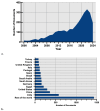Natural Antimicrobial Agents from Algae: Current Advances and Future Directions
- PMID: 39519377
- PMCID: PMC11545849
- DOI: 10.3390/ijms252111826
Natural Antimicrobial Agents from Algae: Current Advances and Future Directions
Abstract
Infectious diseases have significantly shaped human history, leading to significant advancements in medical science. The discovery and development of antibiotics represented a critical breakthrough, but the rise of antibiotic-resistant pathogens now presents a serious global health threat. Due to the limitations of current synthetic antimicrobials, such as toxicity and environmental concerns, it is essential to explore alternative solutions. Algae, particularly microalgae and cyanobacteria, have emerged as promising sources of bioactive antimicrobial compounds. This review provides a comprehensive analysis of the antimicrobial properties of algal-derived compounds, including polysaccharides, fatty acids, and phenols, which have shown effectiveness against multi-drug-resistant bacteria. A co-occurrence bibliometric analysis using VOSviewer highlighted five key research clusters: antibiotic resistance, algal extracts, biosynthesis, water treatment, and novel pharmacological compounds. Furthermore, the primary mechanisms of action of these bioactive compounds, such as the inhibition of protein synthesis and cell membrane disruption, were identified, demonstrating their potential against both common and multi-resistant pathogens. Future research should prioritize optimizing algal biomass production, utilizing genetic and metabolic engineering, and creating innovative delivery systems to enhance the efficient production of bioactive compounds.
Keywords: algae; antimicrobial; bioactive compounds; biosynthesis; cyanobacteria.
Conflict of interest statement
The authors declare no conflict of interest.
Figures



References
Publication types
MeSH terms
Substances
Grants and funding
LinkOut - more resources
Full Text Sources

